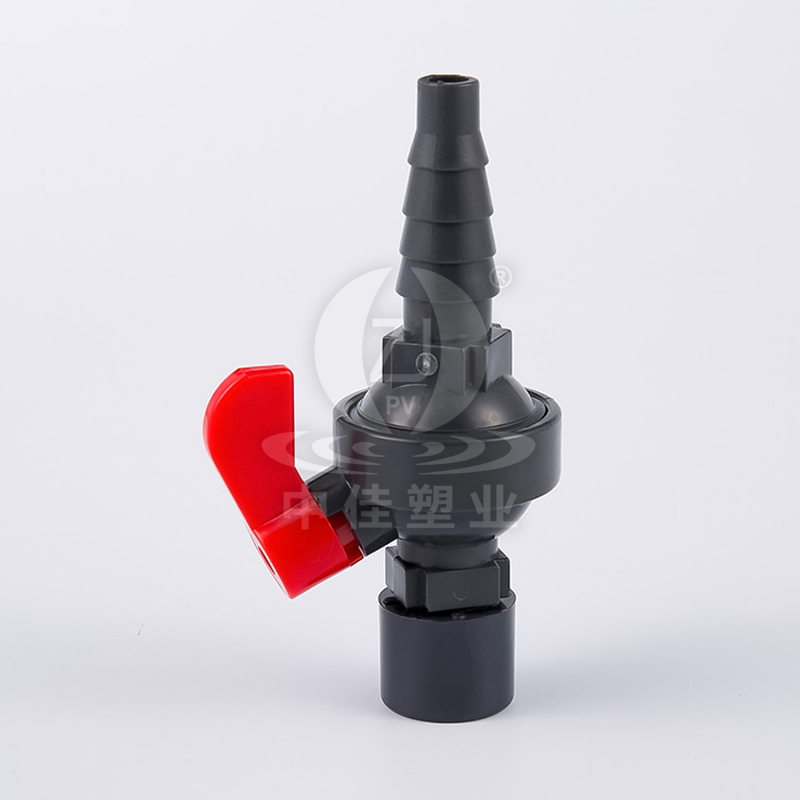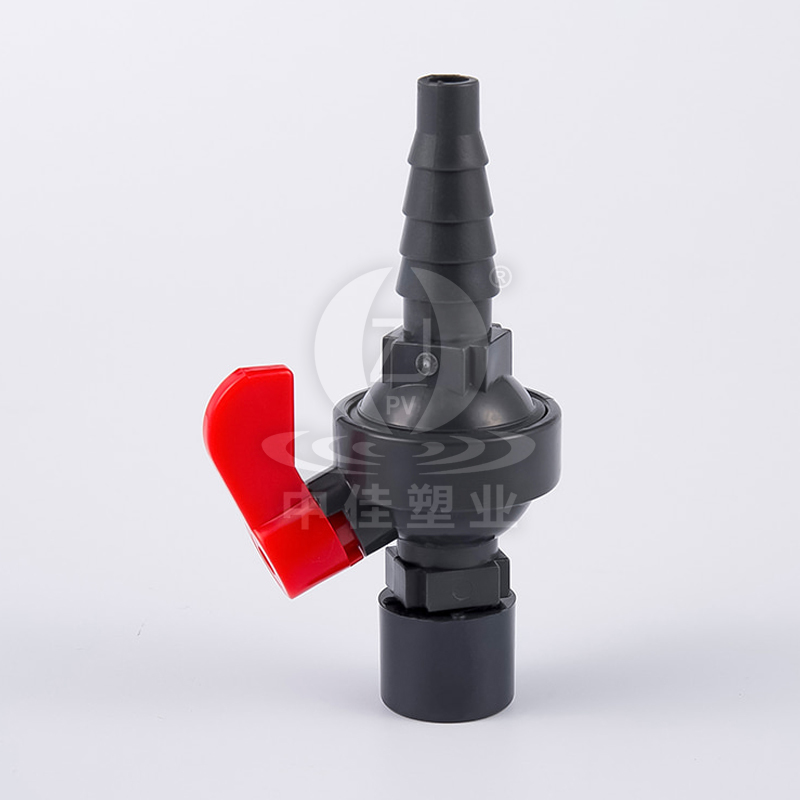Sampling valves are essential components in many industrial processes, including chemical production, pharmaceuticals, food and beverage, and water treatment. These valves allow operators to take samples of liquids or gases from a system safely and efficiently, enabling quality control, process monitoring, and compliance with safety standards. Traditionally, metal valves—made from materials like stainless steel, brass, or aluminum—have been widely used. However, PVC (Polyvinyl Chloride) sampling valves have increasingly become a popular alternative due to their unique properties, cost-effectiveness, and suitability for specific applications.
This article explores the advantages of using PVC sampling valves over metal valves, focusing on aspects such as corrosion resistance, chemical compatibility, cost efficiency, ease of installation, safety, and maintenance. Understanding these benefits can help industries make informed decisions when selecting sampling valves for their systems.
1. Corrosion Resistance and Chemical Compatibility
One of the most significant advantages of PVC sampling valves is their superior resistance to corrosion. Unlike metals, which are prone to oxidation, rust, and chemical degradation, PVC is inherently resistant to a wide range of acidic, alkaline, and neutral fluids.
- Metal Valves: Even stainless steel, though resistant to rust, can corrode when exposed to chlorides, strong acids, or alkaline solutions over time. This may lead to contamination of samples, valve failure, and frequent maintenance.
- PVC Valves: PVC is non-metallic, so it does not oxidize or react with most chemicals used in industrial processes. This makes it ideal for applications such as chemical dosing, water treatment, and corrosive liquid handling.
The chemical compatibility of PVC ensures longer valve life, reduces downtime for maintenance, and prevents contamination of the fluids being sampled. This advantage is particularly critical in industries like pharmaceuticals and food processing, where product purity is paramount.
2. Cost-Effectiveness
Another key benefit of PVC sampling valves is their lower cost compared to metal valves.
- Material Cost: PVC is significantly cheaper than metals like stainless steel, brass, or aluminum. This makes PVC valves a budget-friendly option for large-scale industrial installations.
- Installation Cost: PVC valves are lightweight, which simplifies installation and reduces the need for heavy-duty support structures or specialized tools.
- Maintenance Cost: Because PVC is corrosion-resistant and less prone to chemical attack, it requires less frequent maintenance and fewer replacements, translating to long-term cost savings.
For companies managing multiple sampling points or operating large plants, the cost benefits of PVC valves can be substantial, allowing more extensive sampling networks without excessive capital investment.

3. Lightweight and Easy to Handle
PVC sampling valves are much lighter than metal valves, which makes them easier to install, transport, and maintain.
- Installation: The lightweight nature of PVC means that it can be installed quickly without heavy lifting equipment, reducing labor time and costs.
- Handling: Operators can handle PVC valves safely without the risk of injury from heavy or sharp metal parts.
- Retrofitting: In existing pipelines, PVC valves are easier to integrate into current systems without requiring major structural modifications.
This lightweight advantage is particularly beneficial in industries like water treatment plants and laboratories, where valves are frequently installed in elevated positions or confined spaces.
4. Electrical Insulation and Safety
PVC is a non-conductive material, providing an added layer of safety in applications involving electrically sensitive environments.
- Metal Valves: Metals conduct electricity and may pose a risk of short circuits or sparks, especially in chemical plants handling flammable fluids or in high-voltage environments.
- PVC Valves: The non-conductive property of PVC eliminates these risks, making it safer for hazardous environments.
This safety feature is particularly relevant in industries like chemical processing, mining, and oil and gas, where the prevention of electrical hazards is critical.
5. Ease of Maintenance and Longevity
PVC valves require minimal maintenance compared to metal valves.
- Cleaning: The smooth inner surface of PVC prevents scaling, sediment buildup, and biofilm formation, making cleaning easier and reducing the need for frequent maintenance.
- Durability: PVC’s resistance to corrosion, chemicals, and environmental factors ensures long-term reliability.
- Repair and Replacement: If a PVC valve does need replacement, the process is simple and inexpensive due to its lightweight and modular design.
In contrast, metal valves may require regular inspection, cleaning, and corrosion control, which increases downtime and operational costs.
6. Versatility in Design and Applications
PVC sampling valves are highly versatile and can be customized for a wide range of applications:
- Variety of Sizes: PVC valves are available in multiple sizes to suit different pipe diameters and flow requirements.
- Different Valve Types: They can be designed as ball valves, gate valves, or butterfly valves, depending on the specific sampling needs.
- Temperature and Pressure Tolerance: While PVC cannot handle extremely high temperatures like some metals, it performs well in moderate temperature ranges (typically up to 60–70°C) and low to moderate pressure applications, which covers the majority of chemical and water treatment operations.
This versatility allows PVC valves to replace metal valves in many scenarios without compromising performance.
7. Environmental and Sustainability Considerations
PVC valves are also environmentally friendly in terms of manufacturing and disposal compared to metal valves:
- Energy-Efficient Production: Producing PVC consumes less energy than mining, refining, and processing metals like stainless steel or brass.
- Recyclability: PVC can be recycled, reducing its environmental footprint.
- Reduced Waste: Longer lifespan and corrosion resistance reduce the need for frequent replacements, resulting in less material waste.
Industries increasingly prioritize sustainable solutions, and PVC valves align with this trend by offering eco-friendly alternatives to traditional metal valves.
8. Limitations to Consider
While PVC sampling valves have many advantages, there are limitations compared to metal valves:
- Temperature and Pressure Limits: PVC cannot withstand very high temperatures or pressures, which may be required in certain industrial processes.
- Mechanical Strength: While strong for most applications, PVC is not as mechanically robust as metals, which may be a concern in highly abrasive or heavy-duty environments.
Despite these limitations, for most chemical, pharmaceutical, water treatment, and food processing applications, PVC valves offer superior performance, cost efficiency, and safety.
9. Conclusion
PVC sampling valves offer numerous advantages over metal valves, making them a preferred choice in many industrial applications. Key benefits include:
- Superior corrosion resistance and chemical compatibility, reducing contamination and extending valve life.
- Cost-effectiveness in terms of material, installation, and maintenance.
- Lightweight design for easy handling and installation.
- Non-conductive properties, enhancing safety in electrically sensitive environments.
- Ease of maintenance and longevity, minimizing downtime and operational costs.
- Versatility in design, suitable for a wide range of applications.
- Environmentally friendly production and recyclability, aligning with sustainable practices.
Overall, PVC sampling valves provide a reliable, economical, and safe solution for industries that require accurate and efficient fluid sampling. While metal valves still have their place in high-temperature or high-pressure applications, PVC valves are increasingly preferred for chemical processing, water treatment, pharmaceuticals, and food industries, where their unique combination of properties offers tangible operational advantages.


